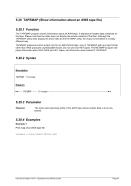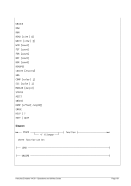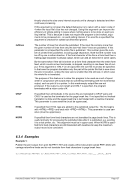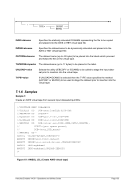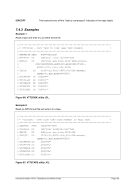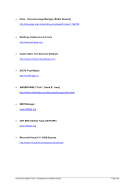4.3 The Device and Status Panel
Pressing “Escape” (ESC) switches between the console panel and the device and status panel. This pa-
nel shows the current configuration, register status information, the CPU state and utilization and is used
to perform different operator actions.
Figure 6: Hercules Device and Status Panel
The device and status panel can be divided in these areas:
All commands in the device and status panel consist of one character key controls. The various keys are
highlighted by bright white versus the grey of the other letters. The following is an overview of all available
keys and their related commands. They are described also in the respective areas sections where they
belong to.
Display Controls
G - General purpose registers
C - Control registers
A - Access registers
F - Floating point registers
I - Display storage at ‘address’




























































































